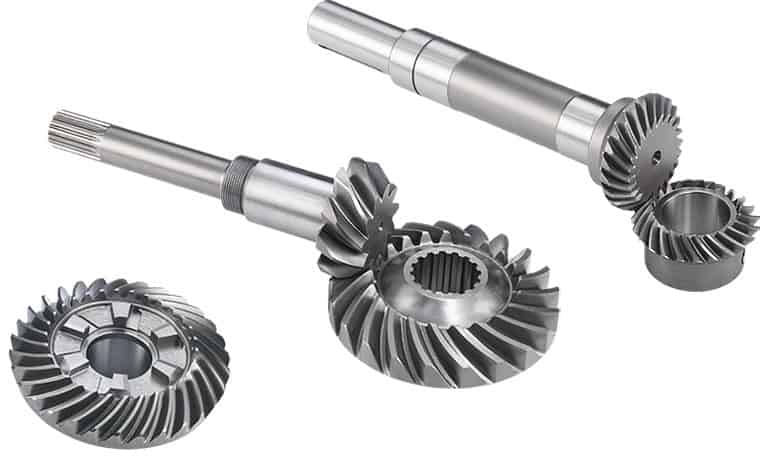Forging or Casting Bevel Gears for Superior Strength and Resistance


The forging, casting or bar stock is machined into a blank. Threads and splines maybe added on to the blank if the design so requires, and other machining processes such as turning, milling, drilling and tapping etc. are carried out prior to teeth cutting.
Next, the product teeth are cut into the blank. There are two common used manufacturing methods for cutting the teeth, and the tooth length and depth forms vary depending on the process adopted. The Gleason system uses the single indexing or face milling procedure, where every gap is milled separately, and the gear then rotated by the width of that tooth space. Straight bevel gearing produced via this method have a tapered tooth depth and tooth thickness, and the curvature along the face width is that of a circular arc. This results in a coniflex gear, where the ends of the teeth curve slightly inward, allowing for greater tolerance of minor errors in shaft alignment as compared to straight cut teeth.
Oerlikon and Klingelnberg method uses the face hobbing process or the palloid manufacturing process, where the gear rotates constantly during the milling process. This continuous indexing method produces gearing with a constant tooth depth and tapered slot width and tooth thickness. The face width of the tooth is curved like an extended epicycloid. Straight bevel gear manufacturer projects with involute tooth length can only be produced via the face hobbing method.
Depending on the end use of the application, either method may be used to cut teeth.
Next, the gear is subjected to heat treatment – usually case carburizing and hardening, resulting in a surface hardness of 60-63 Rc. The pinion is normally up to 3 Rc harder than the gear to equalize wear and tear. Nitriding, flame hardening and induction hardening are rarely used in bevel gear heat treatment, to avoid significant tooth distortion.
